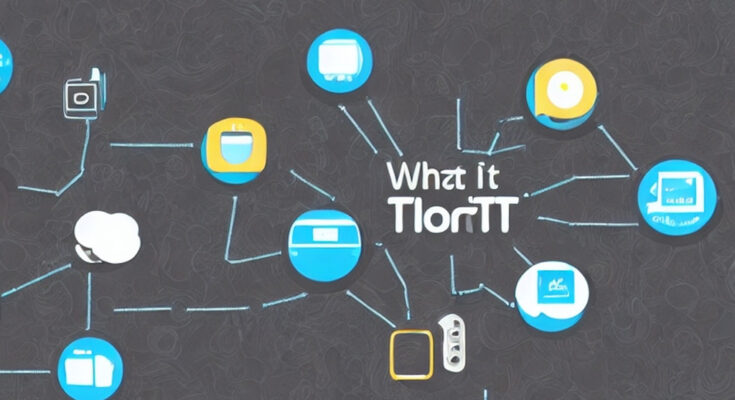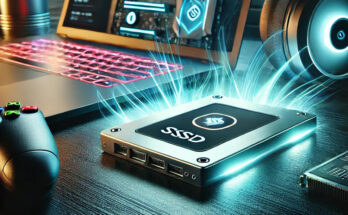Introduction
The term “Internet of Things” (IoT) has evolved significantly since its inception in 1999 by Kevin Ashton. Initially gaining global traction in 2011, IoT has become an integral part of our connected world. As of 2021, there are a staggering 21.7 billion active connected devices globally, with 54 percent being IoT devices. This article explores the intricacies of IoT, covering its definition, types, and the five most popular devices for 2024.
What is IoT?
The Internet of Things (IoT) refers to the ever-expanding network of physical devices seamlessly integrated with sensors, software, and other technologies that enable them to collect and exchange data over the internet. These devices, ranging from household appliances to industrial machines, are revolutionizing numerous aspects of our lives, fostering automation, efficiency, and convenience.
IoT serves as an umbrella term encompassing billions of physical objects connected to the Internet. These objects, or “things,” collect and exchange data with other devices and systems. Recent technological advancements, such as affordable sensors, cloud computing platforms, and progress in AI and machine learning, have propelled IoT’s practicality. IoT devices vary from everyday household appliances to sophisticated industrial tools, each equipped with a Unique Identifier (UID) and capable of autonomous data transmission.
Key Characteristics of IoT Devices:
- Connectivity: Possess the ability to connect to the internet or other networks wirelessly or through wired connections.
- Data Collection: Equipped with sensors to gather data from their surroundings, such as temperature, pressure, motion, or location.
- Processing Power: Integrate microcontrollers or processors to analyze and interpret collected data.
- Communication: Transmit and receive data with other devices, cloud platforms, or users.
- Functionality: Designed to perform specific tasks or actions based on collected data and predefined programming.
Types of IoT Devices
The vast and diverse IoT landscape encompasses a wide variety of devices categorized by their functions and applications:
- Consumer IoT: Devices for personal use in homes and everyday life, including:
- Smart home devices (thermostats, lighting, appliances)
- Wearables (fitness trackers, smartwatches)
- Entertainment devices (smart TVs, streaming devices)
- Security and monitoring systems
- Enterprise IoT: Devices deployed in businesses and organizations for industrial automation, logistics, and operational efficiency:
- Sensor networks (monitoring environmental conditions, asset tracking)
- Connected machines and equipment (predictive maintenance, remote control)
- Smart grids and energy management systems
- Public Sector IoT: Devices used in cities and infrastructure for improved service delivery, public safety, and environmental monitoring:
- Smart traffic management systems
- Connected waste management systems
- Air quality and noise pollution monitoring sensors
Why is IoT Important?
IoT bridges the physical and digital realms, providing organizations with automation and streamlined daily tasks. Its exponential growth offers significant business value, including new revenue streams, data-driven decision-making, increased productivity, and enhanced customer experience. Despite the economic impact of the COVID-19 pandemic, IoT is projected to achieve a Compound Annual Growth Rate (CAGR) of 11.3 percent from 2020 to 2024, according to IDC.
What Are IoT Devices?
IoT devices, comprising sensors, gadgets, and appliances, collect and exchange data over the Internet. Programmed for specific applications, these devices can be embedded into one another. For instance, a car’s IoT device can notify contacts of potential delays due to traffic.
How do IoT Devices Work?
While IoT devices serve various functions, they share commonalities in operation. Physical objects with integrated CPUs, network adapters, firmware, and connection to a Dynamic Host Configuration Protocol server, usually requiring an IP address for network functionality. Configuration and management often occur through software applications, simplifying user control.
Examples of IoT Devices
1. Home Security
IoT-driven smart and secure homes utilize sensors, lights, alarms, and cameras controlled via smartphones for 24×7 security.
2. Activity Trackers
Smart home security cameras and activity trackers monitor and transmit health indicators in real-time, tracking blood pressure, appetite, physical movement, and oxygen levels.
3. Industrial Security and Safety
IoT-enabled detection systems, sensors, and cameras prevent trespassing and detect potential hazards, contributing to industrial safety.
4. Augmented Reality Glasses
Wearable AR glasses provide extra information, including 3D animations and videos, enhancing user experiences in real-world scenarios.
5. Motion Detection
Motion sensors detect vibrations in large structures, identifying anomalies that could lead to catastrophic failures. They are crucial in areas prone to floods, landslides, and earthquakes.
5 Most Popular IoT Devices for 2024:
As the IoT landscape continues to evolve, here are five of the most popular and in-demand devices for 2024:
Smart Home Hubs: Act as central controllers for coordinating various smart home devices, enabling seamless automation and voice control.
Smart Thermostats: Learn user preferences and adjust heating and cooling automatically for enhanced comfort and energy savings.
Smart Security Cameras: Offer remote monitoring, motion detection, and two-way audio communication for increased home security.
Smart Kitchen Appliances: Simplify cooking with features like voice control, pre-programmed settings, and recipe integration.
Wearable Health Trackers: Monitor vital signs, track fitness activities, and provide insights into overall health and well-being.
Unlimited Possibilities with IoT
As IoT continues to grow, the integration of AI promises creative applications across industries. Building a successful career in IoT requires a comprehensive understanding of its intersection with other technologies. Simplilearn’s Introduction to IoT Training Course offers insights into this ever-expanding field, covering concepts, origins, impacts, methodologies, and tools. Embark on this course to discover the limitless possibilities of IoT and advance your career.
Conclusion
In conclusion, IoT has transformed the way we interact with technology, connecting the physical and digital worlds seamlessly. The diverse applications and the popularity of IoT devices showcase its immense potential. As we enter an era where IoT and AI intertwine, the opportunities for innovation across various industries are boundless.
What does IoT stand for?
IoT stands for the Internet of Things.
How many IoT devices were active globally in 2021?
As of 2021, there were 21.7 billion active connected devices globally, with 54 percent being IoT devices.
What are the types of IoT applications?
Common types include Consumer IoT, Commercial IoT, Military Things (IoMT), Industrial Internet of Things (IIoT), and Infrastructure IoT.
What benefits does IoT offer to organizations?
IoT provides benefits such as new business models, data-driven decision-making, increased productivity, and enhanced customer experience.
Which IoT device is popular for measuring indoor pollution?
Foobot is an IoT device specifically designed to measure indoor pollution and improve air quality.




